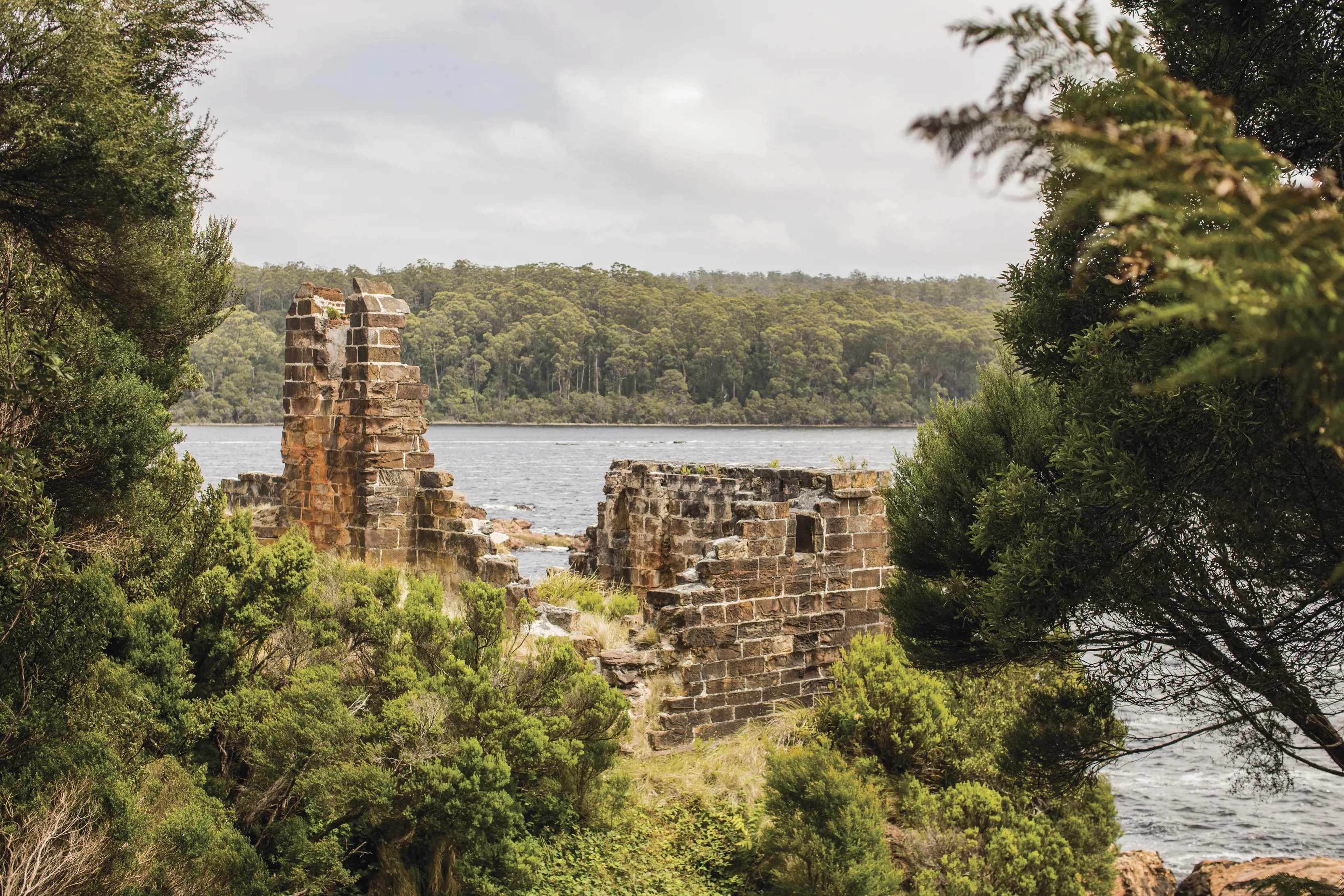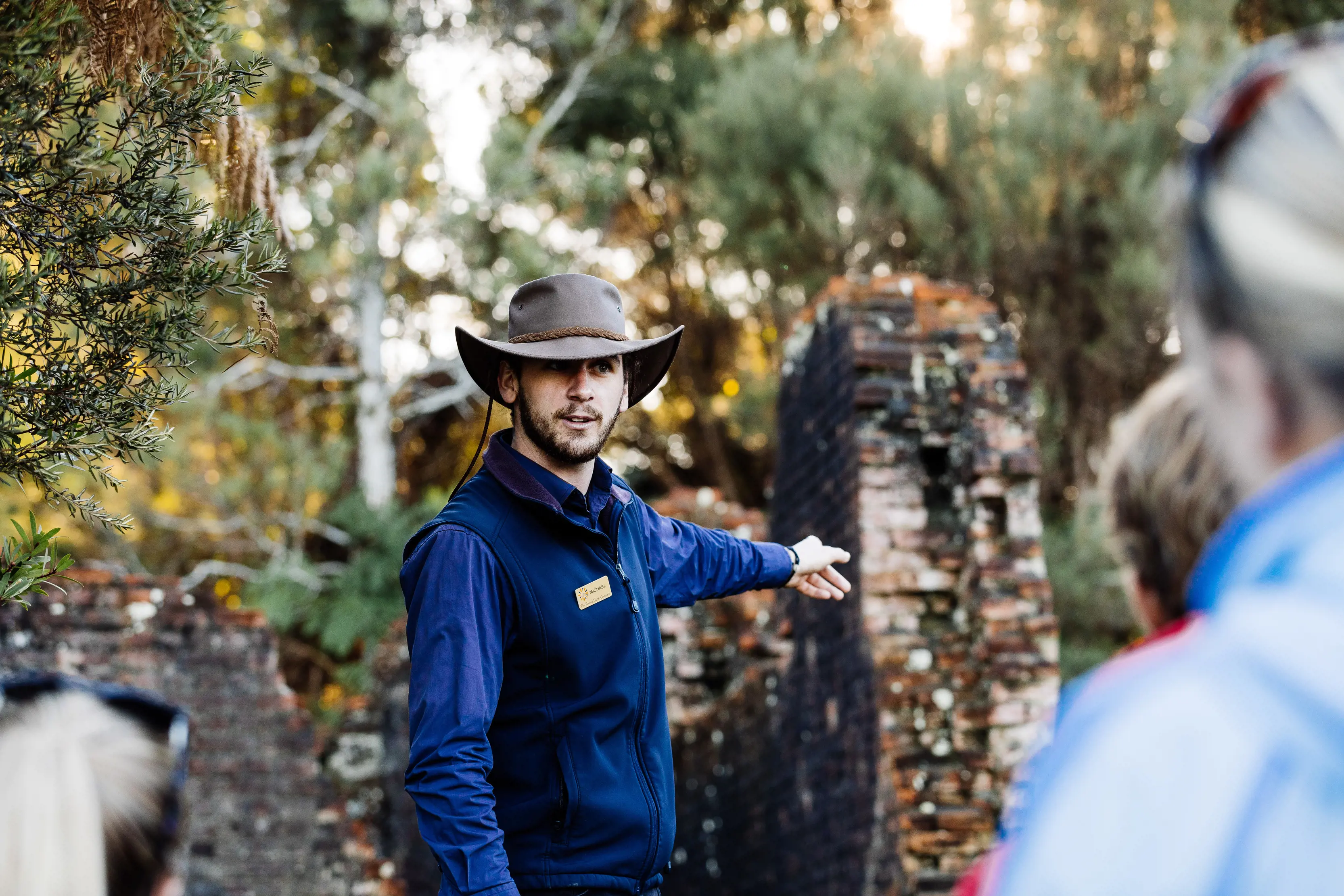
The idea of isolation as punishment took on true meaning at Sarah Island, deep in a vast harbour in the southwest wilderness.
Tasmania’s first penal settlement was established on the remote west-coast island in January 1822, and was intended to strike fear into the heart of convicts – this was one of the harshest convict prisons ever created.
Even getting to the island, located in Macquarie Harbour, was a torment for convicts. To reach it, they had to sail through the entrance to the harbour, a wild, shallow and dangerous channel less than 500m wide. So feared was this narrow passage that convicts named it Hells Gates.
The island was a place of raw punishment, set in the path of equally raw weather, blasted by fierce winds and relentless rain. As Tasmanian historian John West wrote in 1842, nine years after the settlement was closed in favour of Port Arthur, Sarah Island was “a place of degradation, depravity and woe”.
Escape was a daunting prospect. Convicts had to cross the harbour and then hack their way through the west coast’s impenetrable rainforests. Yet more than 150 prisoners tried to escape during the settlement’s 11-year existence.
The great escape
It was the first of the banishment settlements, so it was a bit of an experiment when it was established,” says Kiah Davey, a guide on the island. She’s also the manager of the Round Earth Company, which stages the long-running theatrical production, The Ship That Never Was, in Strahan. It’s the incredible story of the last great escape from the island.
“Sarah Island has a reputation of being very brutal,” Davey says. “That was certainly the reputation the government put out there to try to put convicts off from behaving badly – if you did behave badly, you were going to be sent to hell on Earth.
"In the early years, I think it deserved that reputation. But over the years, the settlement changed quite dramatically and it certainly didn’t deserve that reputation in its later years.”
The island wasn’t chosen as a prison purely for punishment. It was also intended as a centre of industry. The west-coast rivers were lined with Huon pine trees – a timber that was ideal for shipbuilding. In just a few years, this tiny convict outpost became the largest shipbuilding yard in the British colonies.
Although not as well preserved as the Port Arthur Historic Site, Sarah Island contains the remnants of the penitentiary, bakehouse, tannery and the commandant’s slipway, giving an insight into the cruelties of convict life. It’s made all the more stark by the beauty of the harbour, the surrounding Tasmanian Wilderness World Heritage Area and the natural calm so often experienced along the nearby Gordon River.
Sarah Island and Hells Gates are visited on Gordon River cruises, which operate out of Strahan, with guides such as Davey welcoming visitors from the boats for a tour of the island.
“When we first started doing the guided tours on the island 28 years ago, it had a bit of a sense of being unsettling and brooding, but nowadays it has a very peaceful feel,” Davey says. “When the weather’s beautiful and it’s calm and you get a glassy, mill-pond harbour. It’s stunning. People absolutely love it.
“You still get moody days where the rain is pouring down and the wind is blowing, but you don’t get that dreadful feeling any more about the island.”
Need to know
Guided tours of Sarah Island are included on Gordon River cruises, which operate out of Strahan.





